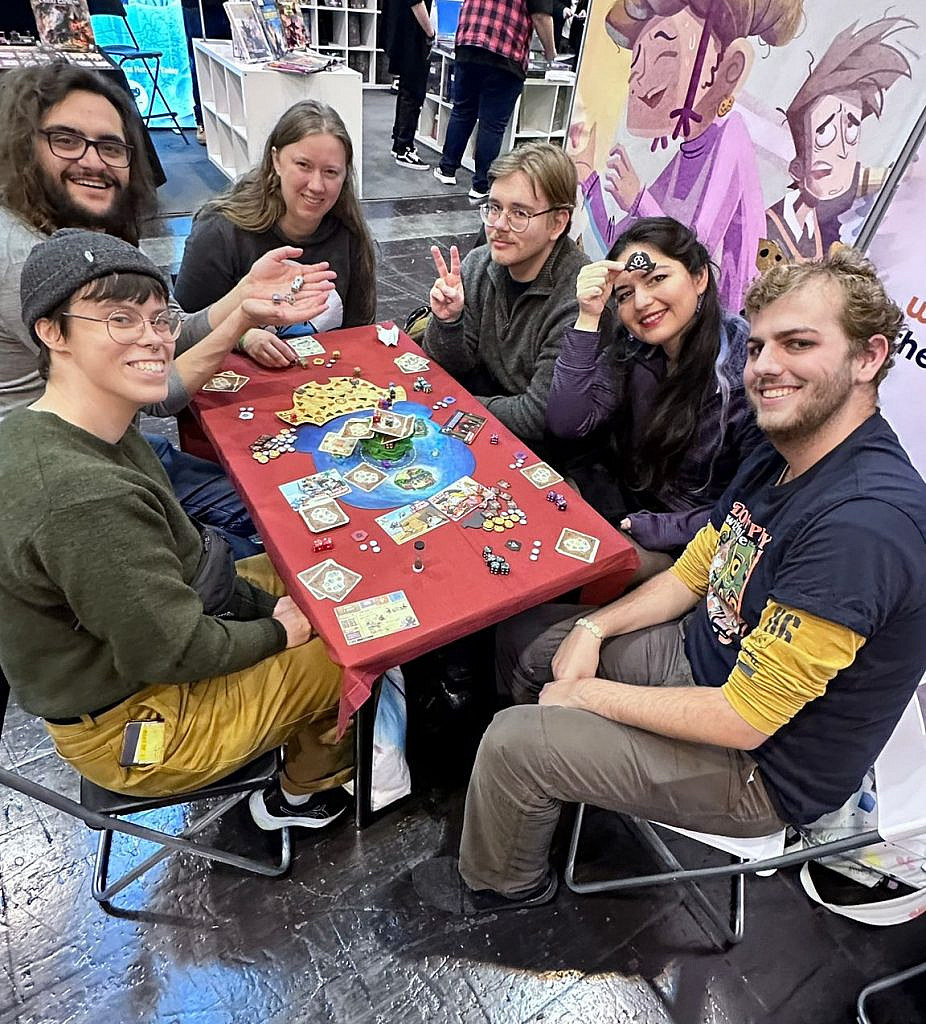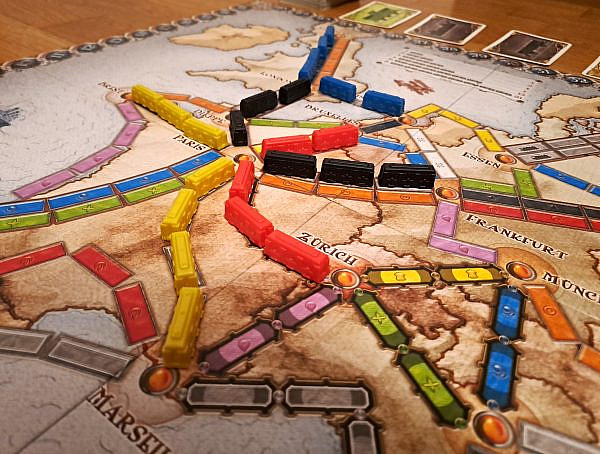… but slowly. “‘I think it takes balls, girl balls, to challenge those stereotypes’: Women’s perceptions of board game culture” is an interesting title for an academic article. Ryan Scoats and Marcus Maloney explore three key themes in the article that was published in the European Journal of Cultural Studies this year: Board games as a male space, The impact of women’s visibility, and Shifting board game cultures.
Unsurprisingly to anyone who has ever been to any board game event, women are underrepresented in this culture. They are often made to feel like an outsider and might have to overcome a knowledge gap in regards to board games compared to men. There is light at the end of the tunnel, though, because an increasing presence of women and allied men are changing this narrative. Visibility and representation help with feeling safe and included. There now are two board game cultures, an older, exclusionary one and a newer, inclusionary one. Both are existing in board game spaces at the same time, although to different degrees.
The article highlights the different experiences of women, who take part in board game culture. Some described feeling uncomfortable because they were the only woman or because geek culture felt very male coded, which sometimes meant that they had less experience or knowledge. In this way, board game culture can be very exclusive and othering. Others expressed that they were either able to capitalize on their uniqueness in these spaces or they were just used to it anyway. There were also voices that spoke of a newer, more inviting board game culture, where women (and other marginalized people) were welcomed and visible – even in charge – and events were held in bright and cozy spaces, like board game cafés, and not in the dodgy dungeons or backrooms of the local game shop. The visibility of marginalized people and accessibility of these events played a big role in how included women felt there. Still, this newer culture is not free of the dust of the past and some women expressed anxiety to go to open events on their own, some even opted to exclusively play with friends.
To get to these results, the authors interviewed 43 women or female presenting people who had a deeper interest in board games. To make sure they reached the right people, they advertised the call in a variety of different board game related on- and offline spaces and phrased it in a way that would attract specifically people with interest in and experience with modern board games, board game culture, and related spaces. After conducting these interviews, the authors used reflexive thematic analysis to find common themes across the interview data. Reflexive thematic analysis includes some reflection on the researcher positionality to reduce possible biases, which they dedicate a section of the article to and which is important because the authors are both cisgender men, who are outsiders to female perspectives, but insiders to board game cultures. They explicitly state that they care about the inclusion of women and social justice.
Just like video games, war games, and other table-top games, board games are part of the realm of geek masculinity. They have a reputation for perpetuating a certain type of masculinity that is geeky. A technology and gaming informed masculinity that is not stereotypically masculine, but that still dominates these segments and gatekeeps them against marginalized players. Scoats and Maloney wanted to shine a light on this in the context of board games, since board gaming is on the rise despite the ubiquity of video games and, yet, relevant research is lacking. Research from other game areas aligns with the findings of this study in that the demographics in gaming spaces and the attitudes of men in these spaces are changing, but right now women still have a considerable outsider status that they have to navigate.
In the end, the authors list a multiplicity of factors influencing board game culture in a positive direction. Besides the aforementioned visibility and inclusion of women and by men, they also notice that the industry is trying to cater to a broader audience and they add that outright harassment and discrimination is more difficult in offline spaces compared to online spaces. Video games are notorious for this kind of toxicity. Board games also allow for changing the space, the rules, and the community a lot more easily than video games, which have to be modded to achieve similar outcomes. So, there is hope after all.
Research Article:
Scoats, R., & Maloney, M. (2024). ‘I think it takes balls, girl balls, to challenge those stereotypes’: Women’s perceptions of board game culture. European Journal of Cultural Studies, 0(0). https://doi.org/10.1177/13675494241264202
Image Credits:
The featured image is by Dooley and licensed under CC 2.0
The second picture is by Maria José Espinosa/Majuegos
I am a Game Studies student who is interested in difficult topics and conversations but prefers their games to be more casual and light. Mostly, I play board games and some video games, and I have dabbled into TTRPGs. I am open, though, and like to try new games.
You might also like
More from Game Research Highlights
How do you want to do this? – A look into the therapeutic uses of role-playing games
Can playing RPGs contribute positively to your wellbeing? A recent study aims to find out how RPGs are being used …
Eldritch horrors and tentacles – Defining what “Lovecraftian” is in games
H.P. Lovecrafts legacy lives today in the shared world of Cthulhu Mythos and its iconic monsters. Prema Arasu defines the …
Are Souls Games the Contemporary Myths?
Dom Ford’s Approaching FromSoftware’s Souls Games as Myth reveals the Souls series as a modern mythology where gods fall, desires …
















